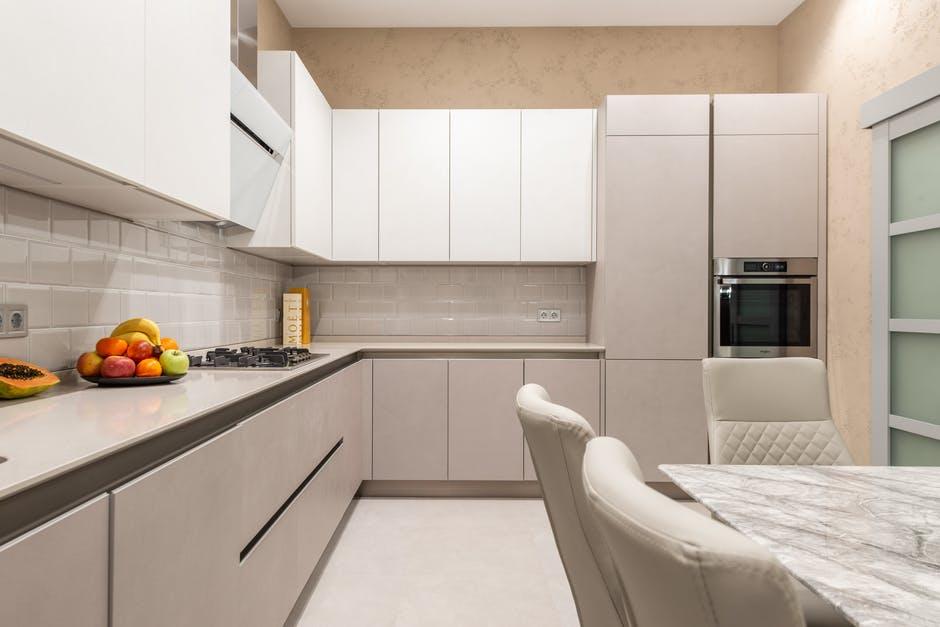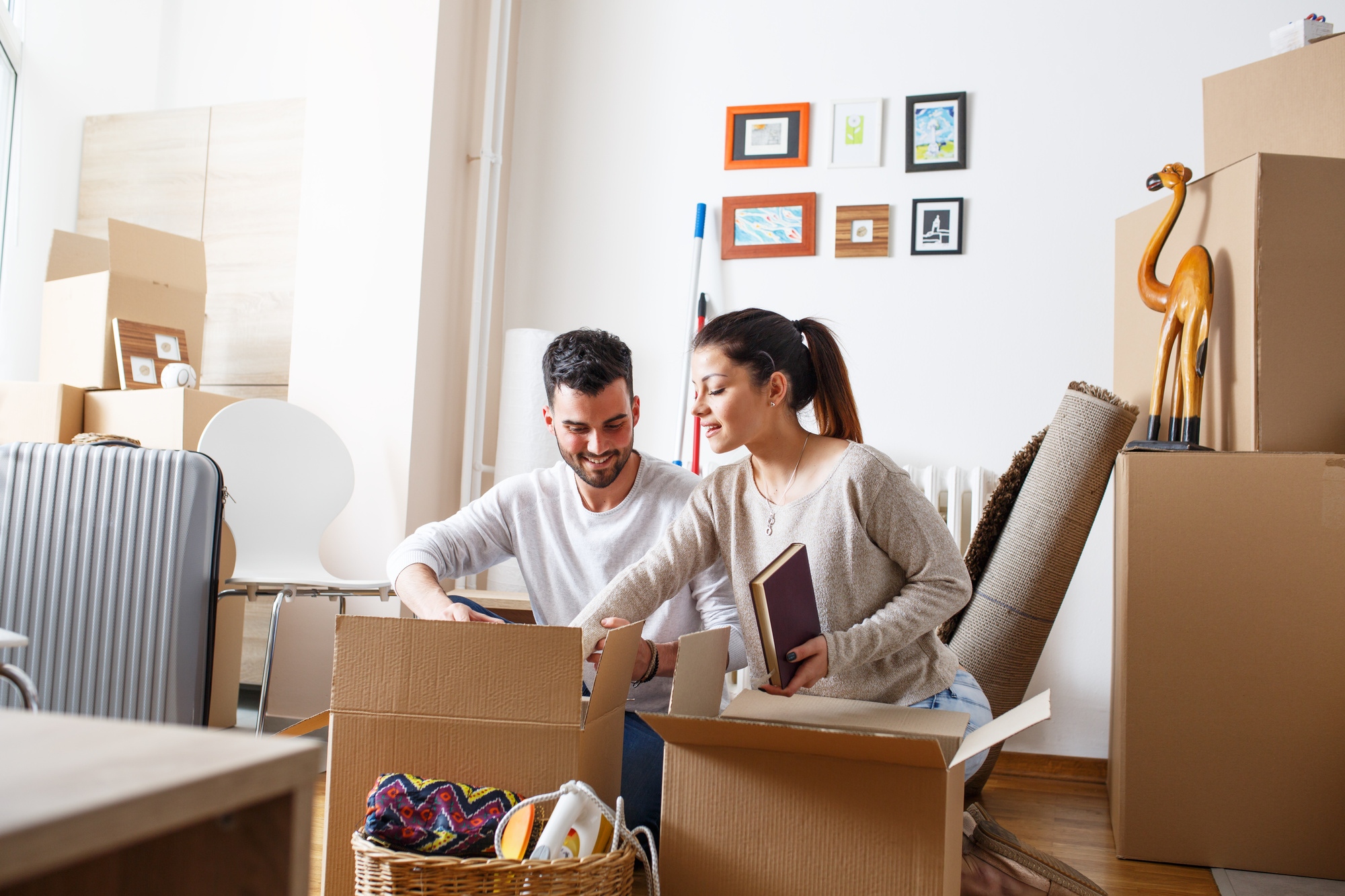Moving day doesn’t have to be stressful if you stay organized and take things step by step. The best way to do this is by following a room-by-room packing checklist. This method helps ensure nothing gets left behind, makes unpacking simpler, and saves time when you settle into your new home.
Kitchen
The kitchen is one of the trickiest rooms to pack because it’s filled with fragile items, appliances, and pantry goods.
- Sort & Declutter: Toss expired foods and donate unopened, non-perishables you don’t plan to move.
- Fragile Items: Wrap plates, glasses, and mugs individually. Place plates vertically in boxes for added strength.
- Small Appliances: Use original packaging if available; otherwise, wrap cords and cushion with towels.
- Essentials Box: Keep a small box with daily-use items like a coffee maker, utensils, and a few plates.
Living Room
This space often contains large furniture and electronics.
- Electronics: Take photos of cable setups before disassembling. Use protective padding for TVs and monitors.
- Furniture: Disassemble large pieces if possible. Place screws and bolts in labeled bags taped to furniture.
- Decor & Rugs: Wrap wall art in bubble wrap or picture boxes. Roll rugs tightly and secure with plastic wrap.
Bedrooms
Bedrooms are filled with clothing, linens, and personal belongings.
- Clothing: Use wardrobe boxes for hanging clothes. Folded clothes can stay in dressers if drawers are secured.
- Bedding: Pack sheets, blankets, and pillows in vacuum-sealed or plastic bags.
- Personal Items: Keep jewelry, important documents, and valuables in a personal bag that travels with you.
Bathrooms
Bathrooms may be small, but they contain a lot of essentials.
- Toiletries: Place liquids in sealed plastic bags to avoid spills.
- Medications: Keep medications separate and clearly labeled for easy access.
- Linens: Towels can double as padding for fragile items.
Home Office
Your office requires special care for electronics and paperwork.
- Documents: Use a waterproof file box for passports, tax records, and other important papers.
- Electronics: Pack in original boxes or use padding and sturdy containers.
- Books: Pack in smaller boxes to keep them manageable in weight.
Garage & Storage Areas
This area often contains bulky and hazardous items.
- Tools: Wrap sharp objects safely and bundle long-handled tools together.
- Hazardous Materials: Properly dispose of paint, propane, or chemicals (these can’t go on moving trucks).
- Seasonal Items: Use clear plastic bins for easy identification.
General Packing Tips
- Label every box with the room name and a brief description of contents.
- Place heavier items on the bottom and lighter ones on top.
- Keep a “first night” box with toiletries, chargers, bedding, and snacks.
- Plan ahead with a Moving Supplies Checklist so you’re never scrambling for tape or boxes.
- Learn how to Pack Efficiently for a Big Move to save both time and space.
FAQs About the Room-by-Room Packing Checklist
How long before moving day should I start packing?
Start 4–6 weeks before your move with non-essential areas like storage spaces. Save kitchens and bathrooms for the final week.
Should I pack room by room or by category?
Room-by-room packing is easier for unpacking and keeps items organized by location. Categories (like books or clothes) can work if you prefer minimalism.
What’s the best way to handle fragile items?
Use bubble wrap, packing paper, or towels for cushioning. Always mark boxes as “Fragile.”
How can I estimate how many boxes I’ll need?
Use a Moving Cost Calculator for Moving Estimates many tools include box and supply estimates based on home size.
What should I do after everything is packed?
Keep your survival box handy and prepare for the First Week After Moving to a New Home by setting aside essentials like toiletries, bedding, and basic kitchen items.
What should be considered when packing nightstands and other small bedroom cabinets?
Nightstands and small cabinets often conceal a surprising collection of items, think books, chargers, loose change, and that mystery drawer you forgot existed. Start by emptying each drawer, sorting items into categories (keep, toss, or donate), and deciding what you'll actually need right away.
- Personal Items: Place bedside essentials (glasses, medications, favorite book) in an easily accessible box or personal bag.
- Small Objects: Bag up loose items like jewelry or cables and label clearly so nothing gets lost in the shuffle.
- Protecting Drawers: For furniture making the move as-is, be sure drawers are emptied and secured with stretch wrap or painter’s tape to prevent accidental opening.
- Delicate Keepsakes: Wrap anything breakable—such as picture frames or souvenirs—in bubble wrap or soft linens for added peace of mind.
Why should you pack garage and storage areas first?
Packing up your garage and storage spaces right at the beginning is a smart move. These areas are usually packed to the brim with awkwardly shaped, heavy, or potentially hazardous items that take longer to pack and require more effort. Starting here means you have plenty of energy to sort, wrap, and safely box everything before you get tired from the rest of the house.
Why should you pack garage and storage areas first?
Getting gas-powered gear ready for the move calls for some extra precautions. Start by emptying any remaining fuel from lawn mowers, trimmers, or chainsaws. Moving companies won’t transport items with gas inside, and it’s a big safety risk anyway. Once drained, add protective covers to sharp blades or chains to prevent accidental nicks or damage during transit. If you can remove any detachable components (think: spark plugs, collection bags, or handles), pack them separately and label them for easy reassembly. For parts that stay put, secure them tightly so nothing rattles or shifts en route. This quick prep will help ensure your equipment and your moving team stay safe on moving day.
What is the best way to pack a child’s room furniture, including beds, dressers, and nightstands?
Packing up your child's bedroom calls for the same care and method you’d use with any bedroom, just with a dash more patience (and maybe a hidden toy or two you’ll find under the bed).
- Beds and Mattresses: Disassemble bed frames if possible, keeping all screws and hardware in a labeled bag taped directly to the main piece. Stand mattresses upright and wrap them in plastic or a mattress bag to protect against dust and dirt.
- Dressers and Nightstands: Empty drawers and pack contents separately. Secure drawers shut with plastic wrap or removable tape to keep them from sliding. For larger pieces, consider removing legs or detachable components to make moving simpler.
- Other Furniture & Decor: Desk chairs, bookshelves, rugs, and curtains can be packed as outlined for the living room and home office. Wrap mirrors and artwork in bubble wrap or picture boxes for extra cushion.
By tackling your child’s room this way, you’ll keep things organized—and maybe even spare yourself from stepping on that rogue LEGO come move-in day.
Final Thoughts
A Room-by-Room Packing Checklist is your ultimate guide to a stress-free move. It keeps you focused, saves time, and ensures nothing is left behind. By staying organized and starting early, you’ll make moving day much smoother and unpacking in your new hom



